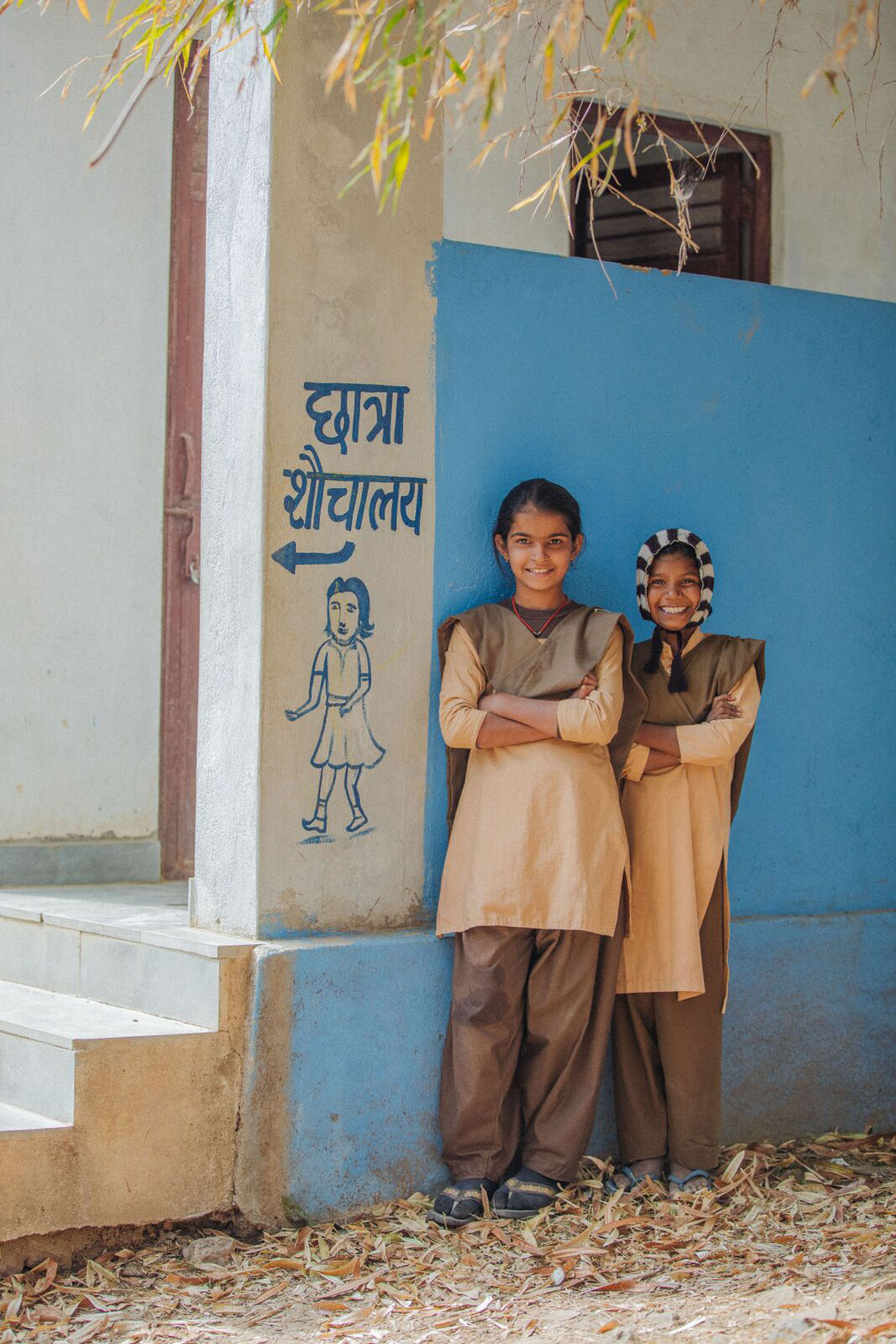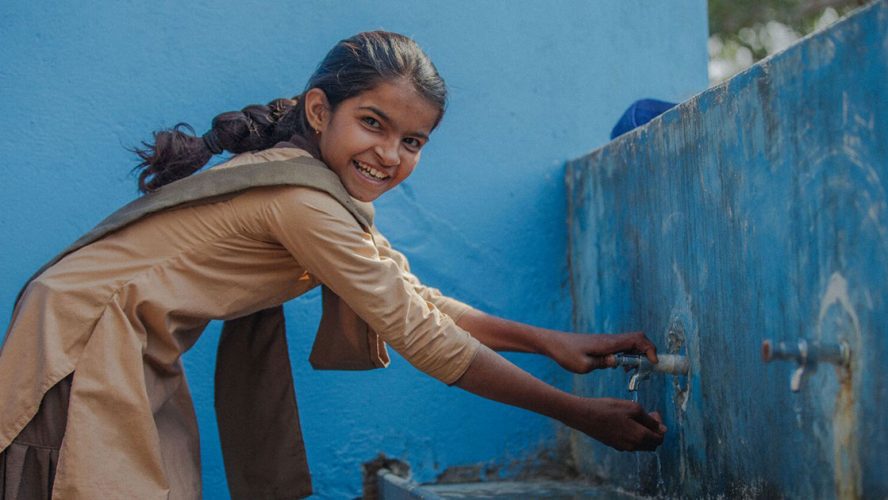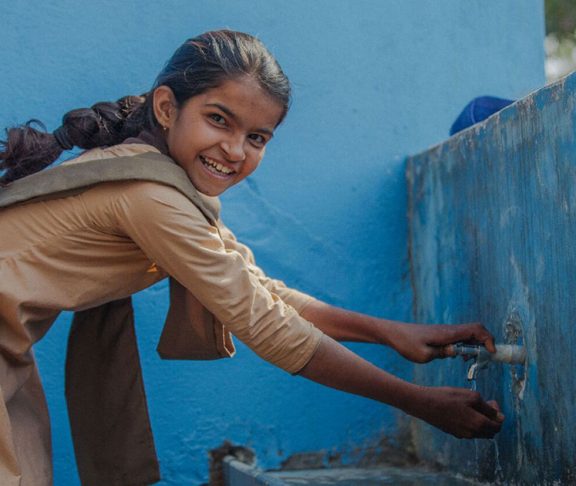Every time nature called, 12-year-old Hemlata dreaded dealing going to the bathroom. Her school in Rajasthan, a state in rural northern India, had no bathroom and no running water. The boys just went behind the building, but if they wanted privacy, Hemlata and her female classmates had to hike off the property into the bush, hauling a heavy bucket of water to wash their hands. Every trip cost them classtime. Sometimes, the girls would skip school altogether rather than face the embarrassing ritual.
Keeping girls in the classroom
If there’s one thing we’ve learned over 20 years of development work, it’s that everything is connected. In Hemlata’s community, a simple plumbing solution — diverting water from a nearby pump into a new school bathroom — helped girls receive their education. Flushable toilets and running water increased school attendance.
Despite incredible progress like this over the past two decades, there are still 15 million young girls around the world who will never see the inside of a classroom.
There are obvious solutions for this problem such as building more schools and removing cultural barriers like child marriage. But there are other solutions that are less obvious and are equally important — drilling wells and installing bathrooms for example. Clean water — or rather the lack of it — is among the biggest barriers to girls’ education.
It’s not enough to build schools. Breaking the whole cycle of poverty is what gets girls into classrooms.
A global problem
Hemlata’s story isn’t unique. As much as one-third of school buildings in developing countries don’t have bathroom facilities. That lack of privacy leads to a sharp increase in dropout rates for girls after puberty. And that’s not the only way water can threaten a girl’s academic future.
Across the developing world, access to clean water is a challenge for a vast number of communities. In many cultures, fetching water is the job of women and girls. Girls in developing countries walk an average of 3.7 miles every day for water — often to dirty lakes and rivers — traveling 15 hours every week. And because it’s safer to walk in daylight, this means skipping school. Waterborne illnesses from these contaminated sources lead to even more missed days.

The root problems of poverty are interconnected, but so are the solutions. When girls like Hemlata get an education, they truly can change the world.
It’s well known that educating girls leads to healthier and more economically stable families and countries, and there are unexpected global impacts as well. Educated women are far less likely than men with the same level of schooling to support radical militant groups like the Taliban, reducing the threat of terrorism. A country’s resiliency to climate change increases for every year of schooling its girls receive. And developing communities with educated girls have far lower rates of transmission of major diseases like HIV/AIDS.
Build a bathroom, educate a girl and fight poverty, disease, climate change and terrorism. From small things come big changes. Everything is connected.

